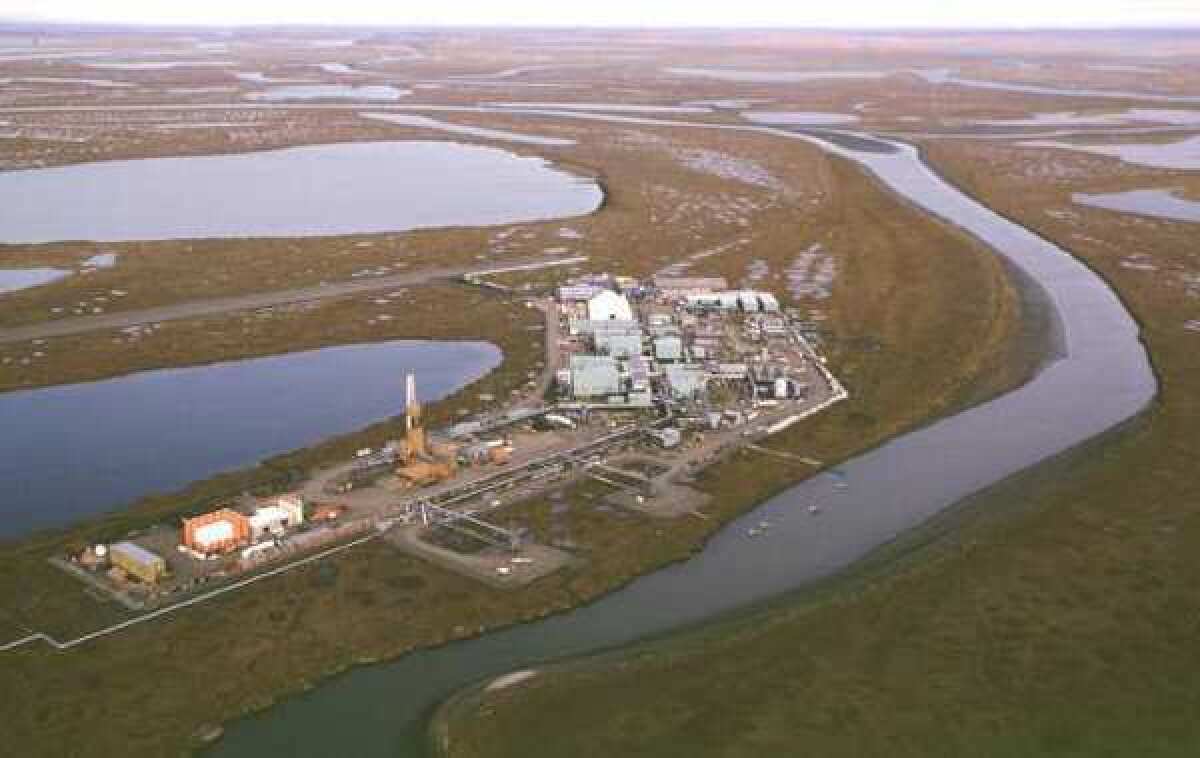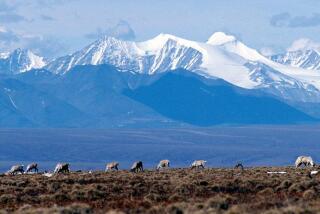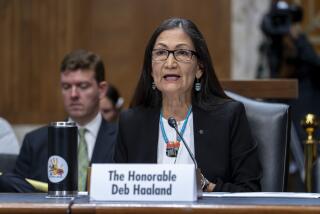Miffed Alaska pulls out of National Petroleum Reserve planning

Setting the stage for confrontation over the massive National Petroleum Reserve, Alaska Gov. Sean Parnell announced the state would withdraw from a joint planning process with the federal government that is designed to shape the location and scope of development on one of the nation’s largest untapped onshore oil reserves.
In a surprise communique late Wednesday, the Republican governor said the state’s decision to back out as a cooperating partner reflects the federal Department of Interior’s “complete failure” to take into account the state’s preferences for development and the federal government’s “complete lack of respect for views of the state.”
The state’s participation is not essential to completing the plan, but the standoff reflects the deep divisions over how much of the 22 million acres should be protected as habitat for grizzlies, caribou and hundreds of thousands of birds that make the western Arctic tundra their summertime home.
Alaska state officials for years have been frustrated at Congress’ failure to authorize oil production in the Arctic National Wildlife Refuge, which lies on the eastern end of the North Slope. They had hoped to see substantial oil production out of the petroleum reserve on the western end of the slope, known as the National Petroleum Reserve-Alaska, or NPR-A. Instead, the Interior Department last month announced it was favoring an alternative that would prohibit oil development on about half the reserve — including some of its most valuable wildlife habitat.
Alaska officials fear that some of the areas placed off-limits to development would restrict not only onshore oil production, but limit possibilities for constructing a pipeline to carry oil from future offshore oil production to market.
Any conceivable route for such a pipeline lies across the NPR-A. Although Interior Secretary Ken Salazar has said the plan allows such a project, Alaska officials fear that the need to route it around off-limits areas could make it prohibitively expensive.
“Decades of experience on the North Slope have demonstrated exploration and development can occur in the same general areas occupied by wildlife with reasonable mitigation measures,” Parnell said in his letter, but such alternatives “were not fully considered and included in the range of alternatives.”
In the federal Bureau of Land Management’s announcement last month, the agency said the “preferred” alternative in an environmental impact statement scheduled to be completed by the end of the year would make about 11.8 million acres available for oil leasing. It said such a plan would make available the “vast majority” of an estimated 549 million barrels of oil believed to be located in the reserve.
BLM spokeswoman Ruth McCoard said she could not comment on the governor’s letter.
Sharon Leighow, spokeswoman for the governor, said the decision to withdraw will not affect the federal government’s ability to move forward with planning for the reserve but reflects the state’s frustration.
“We have commented and tried to be proactive, and we have been ignored,” she told the Los Angeles Times.
Conservation groups who have urged the government to protect large areas of the reserve, home to nearly 400,000 caribou and a critical molting area for up to 30% of the entire population of Pacific Flyway brant goose, have said the Interior Department was right to protect areas so crucial to wildlife.
“Alaska Gov. Sean Parnell’s decision to withdraw as a ‘cooperating agency’ from the planning process for the National Petroleum Reserve-Alaska appears to be a purely political move to undermine BLM’s scientifically sound planning process,” Nicole Whittington-Evans, Alaska regional director for the Wilderness Society, said in a statement.
“It appears from this action that the state is more interested in oil industry pipe dreams than in collaboration where all parties benefit,” she said.
ALSO:
McDonald’s calories: Do you really want to know?
Portland to add fluoride to water supply, despite objections
Wrong note? School orchestra bans 6th-grader’s purple violin
More to Read
Sign up for Essential California
The most important California stories and recommendations in your inbox every morning.
You may occasionally receive promotional content from the Los Angeles Times.










